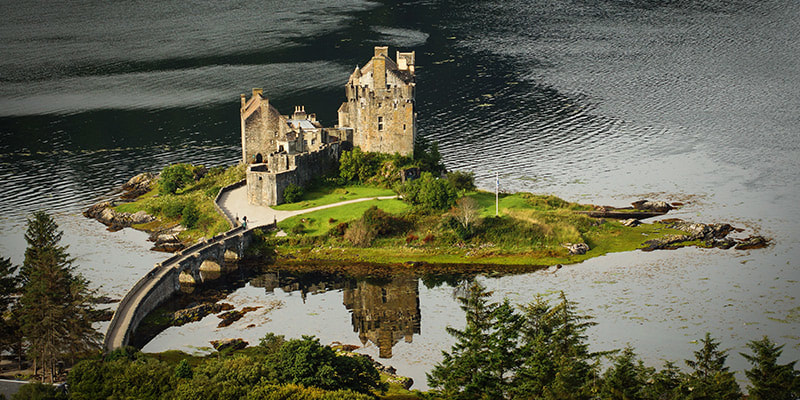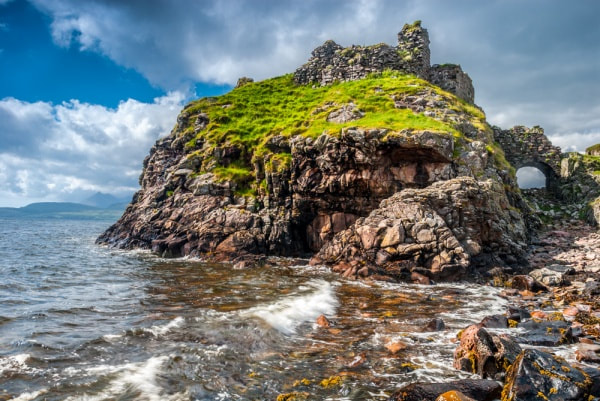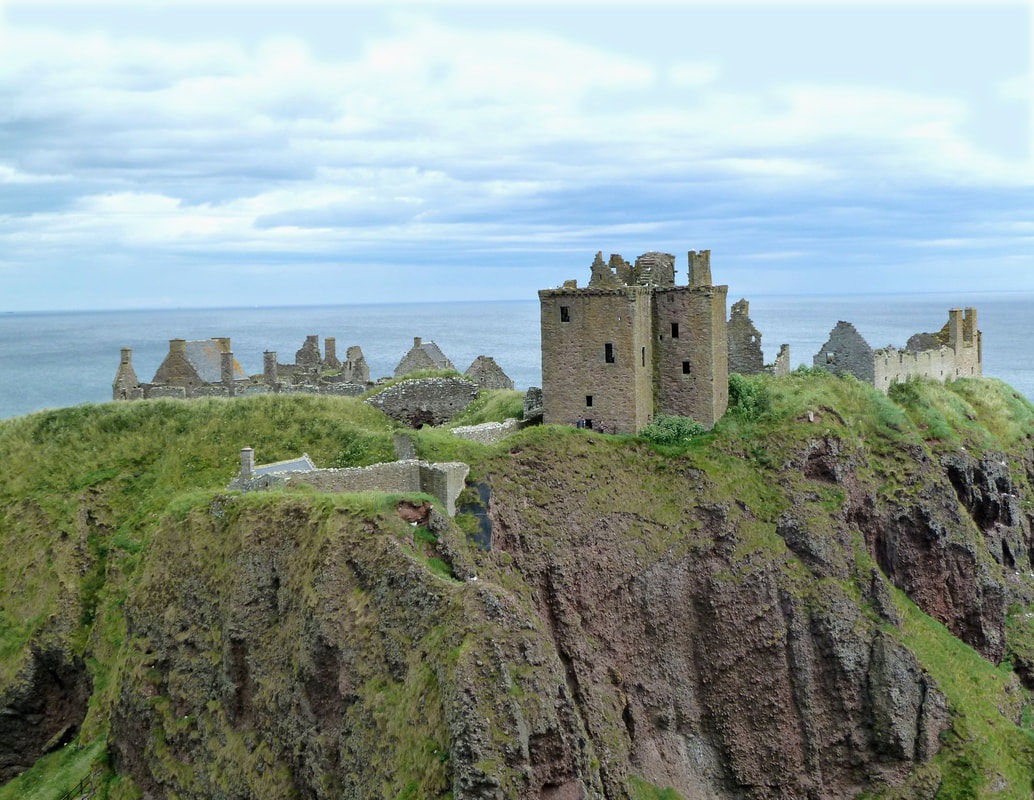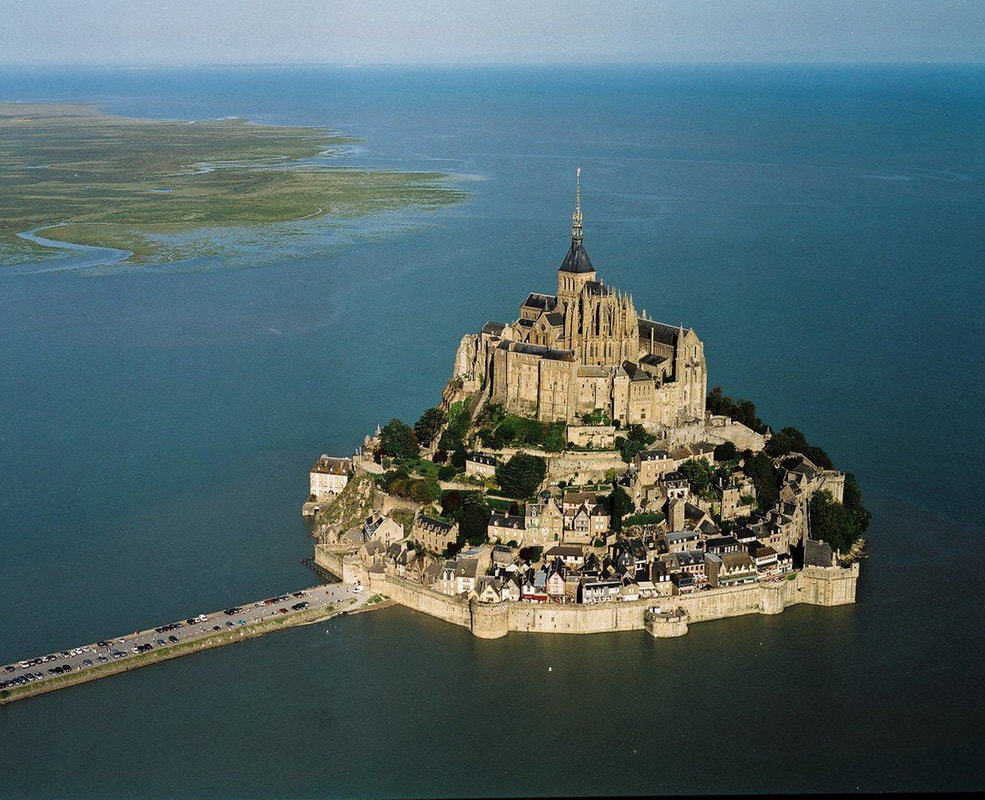Why Oak Island?
|
It has often been asked, “Why Oak Island?”
I’d like to offer three reasons why. First, and foremost, it has been the habit of humankind to build fortresses, prisons, and utopian societies on islands all across the world. This is especially true for the Scottish race, and it is these people that I feel are responsible for whatever happened on Oak Island pre-Money Pit discovery. The other opportunists during this period would have been the French, and they, too, were known to be drawn to islands. It stands out, of course, that treasure stories are often written about islands, for example “Treasure Island,” by Robert Louis Stevenson, and “The Count of Monte Cristo,” by Alexander Dumas – two of my favorite books, while growing up. Monte Cristo is a fictional island where a treasure is recovered by the escaped prisoner Edmond Dantès. Then there are the real life stories of the “Mutiny on the Bounty,” in which mutineers take refuge on the beautiful islands of Tahiti and Pitcairn Island, and the famous book “Robinson Crusoe,” by Daniel Defoe. It is understandable that islands are easier to defend than land fortresses. Attackers can be shot at while they are out in the open, typically in less stable craft, while the defenders can be securely perched high in lookout towers, castle ramparts, or even tall trees. The act of getting out of a boat to gain solid ground leaves an attacker virtually defenseless. Ask the thousands who died on D-Day attacking the beaches of Normandy. And, if the defenders of an island are paying attention, they will likely see their attackers coming from a distance long before they arrive, rather than sneaking up on them through a thick forest. In Scotland, perhaps the most iconic Highland castle is named Eileen Donan, shown above. Located at the meeting point of three sea lochs on the west coast of Scotland, Eilean Donan is situated near the main tourist route to the Isle of Skye.
Eileen Donan is said to mean "the island of Donan," a missionary. However, it is true that the word “dun” means fort in Gaelic, and has been used in many locations all over Scotland and Ireland. Speaking of the Isle of Skye, my own family originated at Dunscaith Castle on the Sleat Peninsula of Skye, also a fortress built just offshore, and connected with a causeway, as is Eileen Donan, as is Oak Island.
The very family of the current premier Baronet of Nova Scotia once ruled from Dunscaith, and Baronet Sir Ian MacDonald MacUisdean is also still the Chief of the Sleat MacDonalds. as well. Dunscaith was said to be a school of warfare in very early Irish lore. Later it was the seat of the MacDonald Lords of the Isles. It's drawbridge from the mainland led to a very narrow passageway in which attackers could be picked off one at a time. Even castles that were not built on an island, often had moats dug around them for the same type of protection an island would offer. Examples of island fortresses can be found in other places in Scotland, and, in fact, all over the world, and are not specific to Scotland, but since my theory revolves around Scots on Oak Island, these examples serve my purpose of illustrating island fortresses. Next is a photo of the ruins of Dunnottar Castle that I've shown on another page on this website. Even Dunnottar, where the Crown Jewels of Scotland were hidden for almost fifty years, and also where a certain treasure I've become interested in, were kept, is built on a point of land affording an island like protection on three out of four sides. This is also common across Europe and elsewhere. |
And not to leave the French out of the picture, below is Le Mont Saint-Michel, a French island fort at Normandy, France, which has been active since about the 8th century AD, and was later turned into a prison. It also served as a monastery in the past.
As for utopias, think of the whole concept of Atlantis. The one thing you remember right off is that it was an island. Even the word Utopia comes from an imagined place or state of being in which everything is perfect, first being used in the book “Utopia” (1516), by Sir Thomas More – a book written about an island named Utopia.
During the very period when the Scots were contemplating settling New Scotland, or Nova Scotia, Sir Francis Bacon, well-known to these same Scots adventurers, was writing his book “New Atlantis” about a utopia to be created in the west. And then we have island prisons, perhaps the most famous being Alcatraz, off the coast of California, and Devil's Island, a famous French prison that operated in at several locations in French Guiana. In Scotland, during the 15th century, James I of Scotland (ancestor to James I of Great Britain who created Nova Scotia in 1621) consigned several of his political enemies to what is known as Bass Island, located in the Firth of Forth. In this period, many members of the Clan MacKay ended up there, including, Neil Bhass MacKay, who gained his middle name from being imprisoned there as a fourteen-year-old in 1428. So we can see that it was commonplace to create fortresses, prisons and utopias on islands, for the obvious reasons of defense and isolation. What other examples do we have of island settlements in Nova Scotia? The French had first attempted a settlement at Saint Croix, a small island in Maine near the mouth of the Saint Croix River that forms part of the Canadian – U.S. border separating Maine from New Brunswick. After only a year they picked up roots and moved to Port Royal, Nova Scotia. There, they and the Scots and the English built various fortresses. Both the French and the British had also fortified nearby Goat Island. Charles de la Tour was the son of Claude de la Tour, leader of French of Acadia on the arrival of the Scots in 1629. Claude allied himself with the Scots, perhaps feeling France had deserted him when he needed their protection. His son Charles had built himself a fortress on Cape Sable Island, near the southern cape of Nova Scotia. When Charles refused a British Baronet of Nova Scotia charter from his own father, Claude and his Scots allied attacked his son’s island for two straight days, but could not conquer it. The worth of islands as fortresses were proven in Nova Scotia as well as across the world. This brings me to my second point concerning the question – “Why Oak Island?” Claude received a charter for the land that extended from the southern cape of Nova Scotia to an area known as Miriligaiche, which included Lunenburg, and some think may have included Mahone Bay and all its island, including Oak Island. I don’t wish to get too deep into the woods on this issue, except to say that if Scots were being forced out of Nova Scotia (as they were in April of 1632) what better place to take refuge than on or near the land charter of their French ally? The letters of patent from Sir William Alexander, dated 30th April, 1630, giving Mirligaiche to Claude, still exist. |
The actual words of Claude’s charter, as given to him by Sir William Alexander (the man I believe is behind the Oak Island mystery) read – "out of the respect and amitie which he beareth unto Sir Claude de Sainct Estienne, knight, lord of La Tour and of Vuarre, and unto Charles de Sainct Estienne, esq., lord of Sainct Denicourt, his sonne, the said Sir Claude de St. Etienne being present accepting, and by these presents stipulating for his said sonne Charles being absent, and for their heyres, and as well for the merit of their persons, and for their assistance to the better discovery of the said country, and upon other considerations, he Sir William Alexander gives to the said knight Latour and unto his said son and unto 'their heyres' &c., all the country, coasts and islands, from the cape and river of Ingogon, near unto the cloven cape, (Fourchu) in the said New Scotland, called the coast and country of Accadye, following the coast and island of the said countrey towards the East unto the Port de la Tour, formerly named L'Omeroy, and further beyond the said port following along the said coast unto Mirliguesche, near unto and beyond the port and cape of La Heve, drawing forward fifteen leagues, within the said lands towards the north, with power to build towns, forts, &c., erected and entitled by two baronies, namely, the Barrony of Sainct Etienne, and the Barrony of de la Tour, which may be limited and bounded equally between the said knight de la Tour, and his said sonne if they shall see cause, upon condition that the said knight de la Tour, and his said sonne, as he hath promised, and for his said sonne by these presents doth promise to be good and faithful vassals of the Sovereign lord the king of Scotland, and their heires and successors, and to give unto him all obedience and assistance to the reducing of the people of the country, &c.”
Since Claude only held his lands if he remained a, “good and faithful vassal of the Sovereign lord the king of Scotland,” it would be incumbent upon him to protect the evacuating Scots in their time of need. Claude was now at odds with France for allying himself with the Scots, and at war to some degree with his own son, so these evacuating Scots were almost his only friends in the world, at least in that part of the world. It would seem that he’d be eager to help them in any way he could, particularly in letting them take shelter on his land grant. This bring me to my third and final reason for the choice of Oak Island. On March 29, 1632, by way of a treaty signed between the brother-in-laws Charles I of Great Britain and Louis XIV of France, Nova Scotia was returned to the French to once again become Acadia. The Scots were given eight days to pack and three weeks to set sail, meaning they would have to leave by April 27th. A quick look at weather studies and weather records around this date along the coast of Nova Scotia and across the North Atlantic will show that it is highly unlikely a small fleet carrying Scots from Port Royal could actually make it safely to Scotland beginning on April 27th. The weather on the leeward side of Nova Scotia, where Port Royal was located, would be relatively safe to sail, but once the fleet rounded the southern cape, they would have potentially faced gale force winds, high seas, fog and, worst of all, freezing spray, which would sink a wooden vessel from the 1600s. The most likely place to pull into for safety would be the deepest bay on the Atlantic coast of Nova Scotia, that being Mahone Bay. The most likely place within this bay to head to would be one of the islands furtherest back in the bay, and Oak Island fits that description. What else might be necessary? Well a straight tack to the back of the bay, skirting the many other islands of the bay would help, and there is such a straight tack from the ocean to Oak Island, a fact I learned from Doug Crowell while studying in his private library of ancient books and maps. Another thing I learned is that the waters close to Oak Island are, in fact, deep enough to anchor a tall ship in. Not far off shore between the island and the mainland, the water reaches 30 to 40 feet deep. This would be the perfect place to take shelter from a storm. And, if a ship or even a smaller landing craft faltered and ran into the cove/swamp area, it may well have sunk there explaining the ship parts found in the swamp. These three reasons are why I point to Scots in 1632 as having landed on Oak Island to begin the mystery of that place: first, to find a place easy to defend under adverse conditions; second, to be under the wing of the French ally; and third, because Oak Island provided literally the safest port in a storm. |




